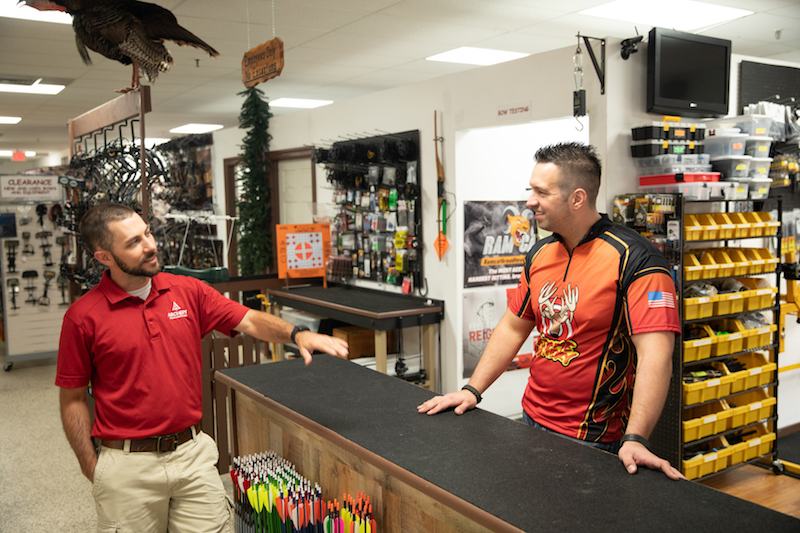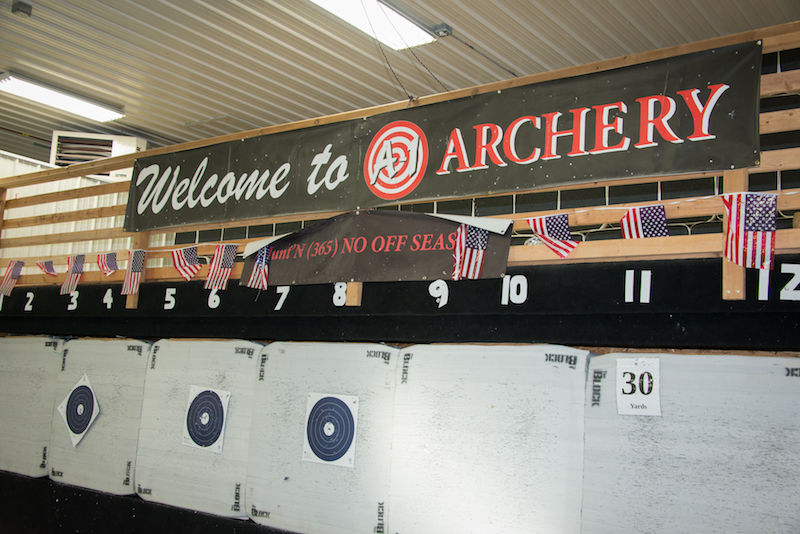BusinessMarketing
5 Ways to Effectively Communicate with Customers
Always strive to connect and effectively communicate with your customers.
Photo Credit: ATA
How well do you communicate with customers?
Do you give them the old head nod when they walk in, or do you engage them in conversation? It turns out, one method is better than the other, especially in today’s world where people can skip shop visits and order products online.
“The days of sitting on a stool behind the counter waiting for customers to come to you are over,” said Keith Weaver, co-owner of Weaver’s Archery in Middleburg, Pennsylvania. “You need to interact and build that relationship with them. Is it hard? Absolutely. But are you going to survive or go by the wayside?”
Tom Goldsmith, co-owner of Plum Creek Archery in Dyersville, Iowa, explains why connecting with his customers is important.
“Since it takes quality one-on-one time to get archery equipment fitted properly to the archer, by default, we’re a very ‘customer service’ based industry,” Goldsmith said. “You have to make a connection with the customer you’re serving to understand what they really want or need.”
So, how do you build trust and connect with your customers? The answer is simple – good communication. Use these five tips to improve your communication skills, which should, in turn, improve your sales.

Make sure you greet your customers when they walk in the door. Photo Credit: ATA
Have you ever been ignored or felt invisible when you walked into a store, gas station or restaurant? It probably didn’t feel good, did it? People want to be welcomed and acknowledged. It’s crucial to greet every customer who enters your store. Better yet, greet them quickly.
Weaver encourages his staff to greet customers within 10 seconds after they’ve entered the shop. Goldsmith expects his team to greet customers within one minute, but said most customers are greeted within 15 seconds.
Even if you’re busy working with another customer, let your new customer know you’ll be with them as soon as possible. Give them an approximate timeline so they know what to expect or how long they’ll have to wait. Try something like, “Hello! I’m helping a customer right now, but I’ll be with you in five minutes.”Then, invite them to shop around. “Feel free to browse around in the meantime.”
Greeting customers shows them you care, but it also lets them know you’re aware of them in your store, which helps prevents theft.
Age, sex, race – it doesn’t matter. People are people, and money is money. Treat everyone with the same respect, and your business’s reputation will flourish.
For example, if a husband, wife and child walk into your store, be sure to greet each of them individually and pose your next question to the group. Don’t make assumptions regarding who to talk to, because you never know who’s calling the shots. In fact, the child might be there to spend birthday money, or mom might want to upgrade her current setup.
Weaver likes to engage women because “a lot of females hold the lines to the checkbook or credit card,” he said. And he’s right. (To learn more, read ATA’s article “Does Your Archery Shop Target Females? It Should.”) He also likes to work with youth, because they’re the next generation of customers. Click here to learn four ways to recruit young archers.
Goldsmith said consistency is important when treating customers. “You can’t do favors for one [customer] and expect another [customer] not to get upset when you don’t do the same for them,” he said. Goldsmith created several “Standard Operating Procedure” manuals for his shop to ensure customers are being treated fairly. The manuals also help employees learn good customer service strategies.

Make sure you're using positive phrasing when speaking with customers. Photo Credit: ATA
Think about how you phrase responses when dealing with customers. “Words have connotations,” Weaver said. For example, he prefers to use “may” versus “can” when asking customers if they need help. “How may I help you?” insinuates you will help the customer, whereas “Can I help you?” leaves them wondering, “Can you?” Choose your words carefully.
Also, use positive language and avoid words your customers won’t understand. For example, if you work on a customer’s bow, explain what you’re doing and why. Explanations help justify your service costs and build trust. Further, your involvement and interaction makes them feel valued and appreciated. That interaction and personalized help give you an edge over your competitors.
If you’re struggling to find the right words, read HubSpot’s article “How to Make Your Customers Happy with These 6 Phrases.”
Have you heard the expression, “it’s not what you said, it’s how you said it?” Tone plays an important role in verbal communication. Weaver said a person’s tone or actions speak louder than words. He encourages his employees to be sincere and genuine in their greetings and conversations. Weaver said it’s challenging, especially when you’re tired or busy, but it’s still important – if not more important – during those trying times.
Goldsmith tries to use a calm, confident tone rather than an annoyed, arrogant one. For example, when Goldsmith talks, he tries to convey a tone that says “we’re partners, so we’ll work together to find solutions and have fun,” rather than a tone that says “we’re the experts, leave it to us.” He also said customers can feel when you’re tense or stressed, so you should be upbeat, regardless of how you feel.
Be careful with long pauses or silence, too. When customers don’t get a reaction from you, they often think you don’t care, Goldsmith said.

WE ARE HERE TO HELP THE INDUSTRY, TO HELP INDIVIDUAL BUSINESSES GET THE MOST OUT OF THE INDUSTRY, AND TO HELP YOU.

Make sure your signs offer welcome as well. Photo Credit: ATA
- Body language: Customers will read into your posture and facial expressions. Be sure not to scowl, lean on the counter, or up against displays. “Look professional,” Weaver said. Stretching, sighing or rolling your eyes leave customers thinking you’re bored or would rather be somewhere else, Goldsmith said. Be aware of your actions and hold yourself accountable.
- In-store signs or posters: Consider the message you’re trying to send with signs and posters. Are they kid- or family-friendly? Do they relate to your shop and services, or are they just for decoration? Ensure your signs reflect your brand positively. You can also hang signs that speak to customers, such as, “We’re glad you’re here,” or “Thank you for your patience, we’ll be right with you.” When customers are waiting, they’ll likely look around and read what’s available. A positive message might help boost their mood.
- Emails, snail mail, social media, etc.: When a customer leaves your shop, your job isn’t over. You must continue the conversation. If they bought something, Goldsmith recommends sending them a hand-written thank-you card to show your appreciation. If they signed up for your email list, offer them a discount to entice them back into your store. Invite them to like or follow your social media accounts. The more you connect with your customers, the more likely they’ll return.
Lastly, consider how you talk to people outside the shop. Many people will contact your business by phone, email, or through social media before they drive to visit. If you’re rude, unhelpful or short with them, they’ll likely forget you and contact your competitor. Phone and online etiquette is important if you want to make a good first impression.
Always strive to connect and effectively communicate with your customers. For more customer service tips, read these articles:
- 5 Ways to Please Your Customers
- Good Customer Service: How to Handle Customer Issues
- 10 Customer Service Tips to Try Today
If you have questions or want more advice, contact the ATA’s business, membership and Trade Show office toll-free at (866) 266-2776.
